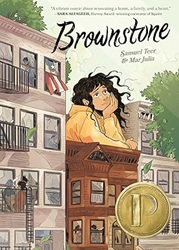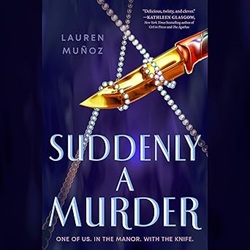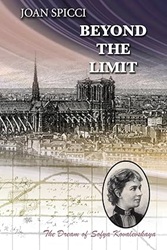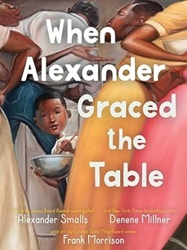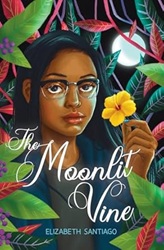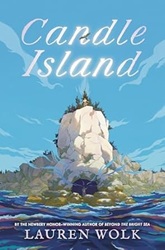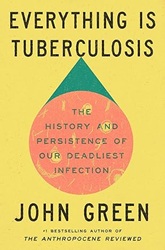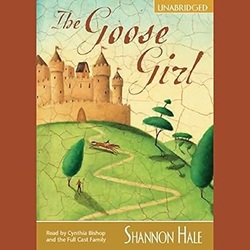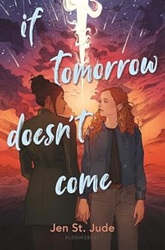Review of Brownstone, by Samuel Teer & Mar Julia
by Samuel Teer & Mar Julia
Versify (HarperCollins), 2024. 318 pages.
Review written February 18, 2025, from a library book.
Starred Review
2025 Printz Award Winner
2025 Cybils Award Winner, Young Adult Graphic Novels
Brownstone is a graphic novel about an almost-fifteen-year-old girl named Almudena sent to spend the summer in New York City with the Guatemalan father she’s never met while her dancer mother does a European tour.
Almudena’s not happy about it. Her father doesn’t speak much English, and she doesn’t speak much Spanish. So the neighbor lady comes over to translate. Almudena’s not sure how she feels about that. The address is a brownstone that looks beautiful on the outside – but on the inside, her father is in the midst of renovating it.
This is a story of Almudena getting to know the neighborhood and the neighbors and learning about her Guatemalan heritage. She also bumps against some prejudice when she befriends a lesbian who runs the local bodega, and learns about gentrification when some of those neighbors have to move because of rising rent.
It’s all lovingly told, and I enjoyed getting to know Almudena’s new family, too.
We end up with social commentary in readable, interesting graphic novel form.
Find this review on Sonderbooks at: www.sonderbooks.com/Teens/brownstone.html
Disclosure: I am an Amazon Affiliate, and will earn a small percentage if you order a book on Amazon after clicking through from my site.
Disclaimer: I am a professional librarian, but the views expressed are solely my own, and in no way represent the official views of my employer or of any committee or group of which I am part.
What did you think of this book?
